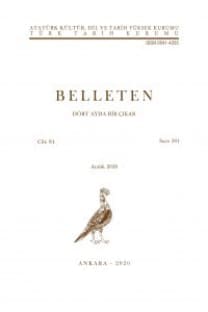Tanzimât Döneminde Bosna Hersek'te Kilise İnşa ve Onarım Faaliyetleri
Osmanlı Devleti bir çok milletin aynı çatı altında yaşadığı kozmopolit bir toplumsal yapıya sahipti. Bu çok milletli imparatorlukta, tüm dengeler hak ve adalet ölçüleri üzerine kuruluydu. Adalet terazisindeki en küçük dengesizlik hemen hemen tüm toplumda huzursuzluğa yol açıyordu. XVII. yüzyıla gelindiğinde adalet mekanizması ve devlet otoritesinde aksaklıklar meydana gelmeye başlamıştı. Bu durumdan en fazla şikâyetçi olan bölgeler tabiî olarak farklı etnik gurupların iç içe bulunduğu yerlerdi. Bu bölgelerin başında da Osmanlı Devleti’nin yıkılışına kadar sorun olmaya devam eden Balkanlar geliyordu. Balkanlarda adil olarak toplanamayan vergiler ve serbest dinî faaliyet icra edememek başlıca şikayet konularıydı.
Construction and Repair of Churches in Bosnia-Herzegovina during the Tanzimat Period of Reforms
Adherents of three different faiths resided in Bosnia-Herzegovina, and they identified themselves by their religious affiliation. The Christian community was comprised of two groups-the Roman Catholic and the Eastern Orthodox. After the Ottoman conquest, the Muslims occupied the superior rank. On its capture by Sultan Mehmed II, a rescript was proclaimed stating that the Roman Catholic clergy were free to practice their religion. The identical privilege had already been granted to the Eastern Orthodox on the capture of Constantinople. Nonetheless, neither group had been granted the privilege of freely constructing places of worship or repairing those already standing. Initiation of these two kinds of activities was wholly subject to the sultan's approval. With the proclamation of the Tanzimat political reforms, an increase in both types of activities became observable. As an outcome of the principles enunciated in the rescript, the Christian communities of Bosnia-Herzegovina submitted petitions to the center requesting permission to undertake the construction of new churches and the repairs of existing ones. In regard to this region, where the most insignificant religious matter could assume an international dimension, the state devoted careful attention to such requests. The state proceeded to conduct on-site inspections in the light of these kinds of requests, and it responded to them in a spirit of good will. This culminated in the approval of every one of these requests. From this perspective, the application of the Tanzimat reforms resulted in a positive outcome for the Christians in Bosnia-Herzegovina. The official promulgation of the Tanzimat reforms conveyed no other meaning in Bosnia-Herzegovina, however.
